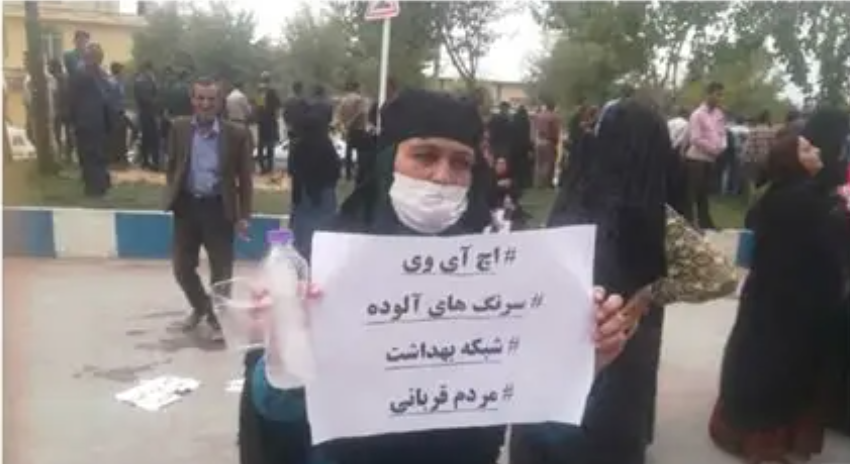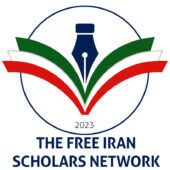An FISN Research Report
By: Ashraf Zadshir, MD; Clinical Assistant Professor; Scholar and Researcher on HIV/Hepatitis; 2006 California Woman of the Year.
Note: FISN research reports and papers may be used freely with proper referencing and credit to the authors and the Free Iran Scholars Network.

Part 1: HIV as a Global Pandemic
Global Overview
HIV/AIDS remains one of the most enduring global pandemics. Over 39 million people are currently living with HIV worldwide. While enormous strides have been made in treatment and prevention through antiretroviral therapy (ART), PrEP, and public health campaigns, the pandemic continues. It persists especially in regions plagued by poverty, conflict, and inequality.
WHO’s Global Goal
The World Health Organization and UNAIDS have committed to ending AIDS as a public health threat by 2030. Their strategies include universal access to testing and treatment, the 95-95-95 targets (95 percent of people with HIV diagnosed, 95 percent on treatment, 95 percent virally suppressed), and addressing social determinants of health such as poverty, stigma, and education.
Why Resources Matter
Progress depends not only on medical advances but also on sustained investment in public health systems. Political will is essential to reach marginalized populations. Community outreach for testing, counseling, and treatment must be supported. Education and destigmatization are also critical.
In countries that have prioritized these elements, HIV transmission and AIDS-related deaths have dropped sharply. In others, especially where corruption or repression blocks access to care, the pandemic remains entrenched.
Recent epidemiological data show that Iran belongs to the latter category. From 1990 to 2017, HIV incidence in Iran increased by nearly 10 percent annually. AIDS-related mortality rose by nearly 9 percent each year. These increases are among the steepest in the Middle East and North Africa region. The sharpest rise was seen among women, pointing to shifting transmission patterns and structural gender disparities in care and education [6].
A 2025 study using national data found that the burden of HIV in Iran is disproportionately high in provinces with lower socio-economic development. These low-SDI regions face poorer health infrastructure, weaker outreach, and higher stigma [7].
Part 2: HIV in Iran – A Humanitarian and Political Crisis
Crisis Behind Closed Doors
In Iran, HIV is a silent and growing emergency. It is driven not only by inadequate medical infrastructure but by systemic abuse, corruption, and political denial. Official estimates suggest about 70,000 people live with HIV in Iran. In reality, the number may be far higher due to stigma, poor surveillance, and underreporting.
Vulnerable populations are the most at risk. These include:
People who inject drugs (PWID). This group has historically been the leading source of transmission due to shared needles and criminalization.
Street children. This population is rapidly growing. Many are exposed to sexual abuse, forced labor, and drug use. Some are trafficked by gangs allegedly linked to regime entities such as the IRGC.
Sex workers and LGBTQ+ individuals. These communities are criminalized and excluded from formal healthcare systems.
Prisoners. Iran’s incarcerated population faces high HIV rates due to poor sanitation, overcrowding, and limited access to ART.
Studies show that while Iran once led the region in harm-reduction approaches such as methadone therapy and needle exchanges, these programs have stagnated. Injection drug use remains a dominant transmission route [8]. Data also show an increasing burden among women and youth [6].
Systemic Barriers
Iran’s healthcare system is underfunded and deteriorating. Even basic HIV services are unavailable in many areas. There is no coherent national strategy for at-risk groups. Drug users, LGBTQ+ individuals, and impoverished youth are treated more like criminals than patients.
Corruption is rampant. Funds intended for health programs are misappropriated or siphoned off. Healthcare is politicized. Medical appointments and drug access often depend on connections rather than clinical need.
Censorship and repression worsen the crisis. Journalists, physicians, and public health officials who report on HIV outbreaks or policy failures face surveillance or arrest. Civil society groups are blocked from running outreach or education programs.
Denial and stigma persist at all levels. Public education about HIV is rare. Testing is discouraged. Many avoid seeking care for fear of shame, discrimination, or police attention.
Iran’s most vulnerable groups remain invisible in official discourse. Prison studies have shown that even where ART is technically available, barriers such as frequent transfers, lack of counseling, and insufficient follow-up prevent effective treatment [9]. Women and children living with HIV face even steeper barriers in rural and low-income areas [8].
The Sanctions Myth and the IRGC Medicine Mafia
Although international sanctions do not target medicines, regime-linked profiteers have built a system of artificial scarcity. Antiretrovirals are often available only on the black market. Prices are inflated. Distribution is monopolized by entities connected to the IRGC and the Supreme Leader’s economic institutions.
In many cases, access to medication depends on political loyalty or ability to pay. This system of medical apartheid protects the powerful and punishes the marginalized. It turns HIV into a death sentence for the poor or politically unconnected [3, 9, 10].
The regime’s narrative blames Western sanctions for drug shortages. But numerous studies and watchdog reports show that the deeper problem lies in internal corruption and profiteering [4, 5, 11].
Impact
Without real reform, HIV in Iran is not just a health concern. It is a humanitarian emergency and a human rights crisis. The unchecked spread of the virus among high-risk groups will deepen social inequality and destroy lives. It will also weaken any chance of achieving global AIDS eradication goals.
The increasing burden in rural and low-SDI provinces reflects decades of failed investment. The criminalization of the epidemic in Iran is a sign of broader collapse in education, care access, and social protection. Iran’s refusal to protect LGBTQ+ citizens and drug users undermines the most basic public health principles.
Cross-border consequences are growing as well. Afghanistan-Iran migration, regional drug trafficking, and cross-border treatment gaps risk spreading the epidemic beyond Iran’s borders [8].
Conclusion: What Must Change
To align with global targets and protect its population, Iran must take the following steps:
Acknowledge the HIV epidemic. End public silence and denial. Destigmatize the virus through national education campaigns.
Invest in health systems. Rebuild clinics, expand mobile testing, and decentralize ART distribution.
Protect the most vulnerable. Guarantee health access for children, prisoners, sex workers, and drug users.
Allow independent oversight. Open public health data to researchers. Allow NGOs and journalists to document outbreaks.
Engage international partners. Technical, financial, and humanitarian support must be welcomed and used transparently.
Ending AIDS requires more than access to drugs. It demands justice, transparency, and bold political will. In Iran, that will require an end to corruption, the dismantling of the medicine mafia, and the full decriminalization of affected communities.
A Vision for the Future: HIV and Healthcare in a Free, Democratic Iran
As Iran continues to suffer under a regime that neglects health and human dignity, the vision for a democratic future becomes more urgent and achievable.
In a democratic Iran, healthcare would be universal. Every citizen, regardless of gender, background, or political status, would have access to free or affordable HIV prevention, testing, and treatment.
Stigma would no longer dictate public policy. Individuals would not be punished or criminalized for being LGBTQ+, using drugs, or living with HIV. Science and compassion would replace repression and silence.
References
1- NCRI. Kowsar Pharmaceuticals and Black Market Control. (2024)
2- UNAIDS. Global AIDS Update 2023. https://www.unaids.org
3- WHO. Ending the AIDS Epidemic by 2030. https://www.who.int
4- NCRI. IRGC’s Medicine Mafia. https://www.ncr-iran.org
5- Iran Focus. Pharmaceutical Corruption in Iran. https://www.iranfocus.com
6- Mojahedin. Regime’s Role in Medicine Black Market. https://english.mojahedin.org
7- Moradi Y, et al. “HIV/AIDS burden in Iran from 1990–2017: GBD analysis.” BMC Public Health. https://www.ncbi.nlm.nih.gov/pmc/articles/PMC8932215
8- Nejadghaderi S, et al. “National and sub-national HIV/AIDS epidemiology in Iran (1990–2021).” Scientific Reports. https://www.nature.com/articles/s41598-025-06499-4
9- Ghanbarzadeh N, et al. “HIV in the Middle East and North Africa: progress and challenges.” AIDS Reviews. https://www.ncbi.nlm.nih.gov/pmc/articles/PMC7924262
10- Hosseini H, et al. “Barriers to ART adherence in Iranian prisons.” Shiraz E-Med J
11- Rajavi, M. 10-Point Plan for Future Iran. https://maryam-rajavi.com
